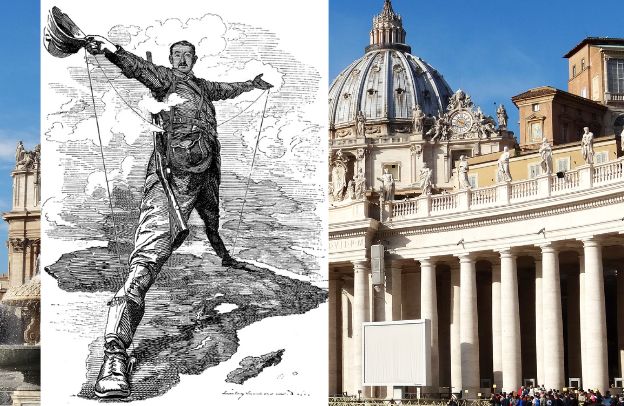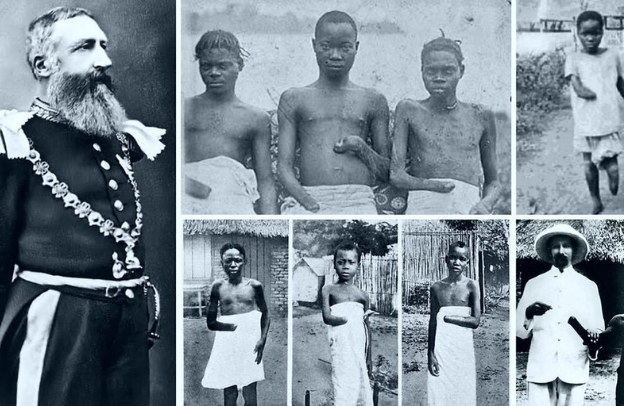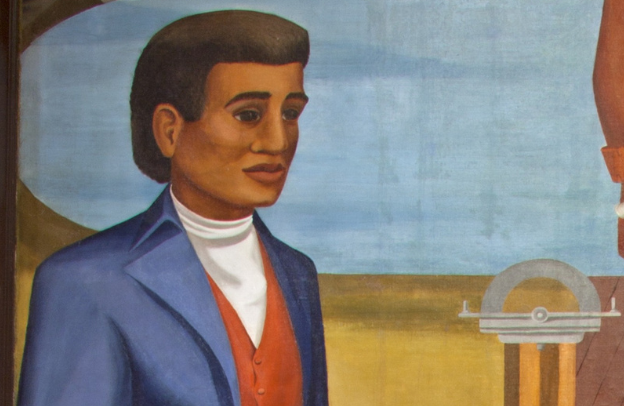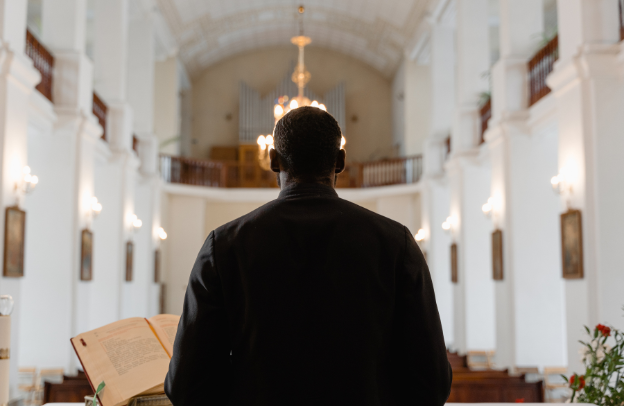What Racism Requires: Religion And Science Were To Go Hand In Hand
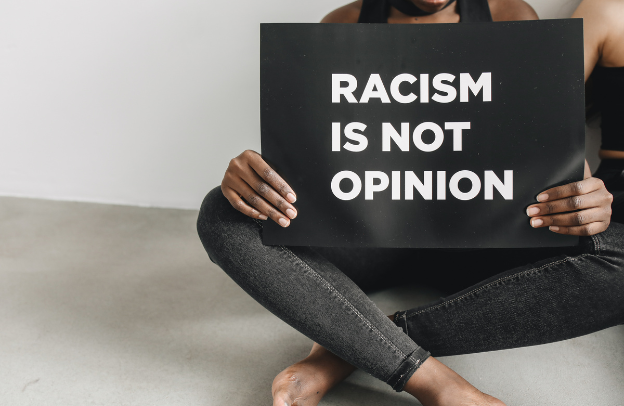
This is part two in the series “Racism And Slavery: Reflection On Human Madness by Stefano Anselmo”. See part one to learn more. Racism is a tool of power used to maintain the status quo and secure or acquire privileges, expressed through forms of discrimination.
Want to learn more about storytelling? Start by downloading the first chapter of The Storytelling Mastery.
Here is a list of all the articles in the series – Racism And Slavery: Reflection On Human Madness by Stefano Anselmo:
- Racism And Slavery: Reflection On Human Madness by Stefano Anselmo
- What Racism Requires: Religion And Science Were To Go Hand In Hand
- Racism And Slavery: How The Hamitic Theory Began To Crumble
- In America Before Columbus: Exploring European Racist Stereotypes
- Racism And Slavery: African Crisis Is An Invention Of The West
- Our House Slaves: European Centuries Of Heritage
- Religious Endorsement Of Slavery As A Legitimized Business Both In Islam And Christianity
For it to be effective, it is essential that:
- Everything is controllable and under control.
- Everything conforms to established norms.
- To achieve this, simplification, cataloging, and above all, determining what is permissible (and therefore good for those in power), eliminating as many as possible the variations.
- Those deemed harmful to society are eliminated because they constitute the variations mentioned above: handicapped individuals, gypsies, homosexuals, subjects deemed non-Aryan (especially Blacks), and non-Christians (especially Jews and Muslims). The tools used range from marginalization to deprivation of rights, to dehumanization, exclusion, and suppression through genocides or mass killings.
The Invention of Races and Scientific Racism: The late 19th and early 20th centuries were dominated by “Scientific Racism,” which sought to categorize all things according to a criterion drawn from the study of the Natural Sciences, satisfying the scientific knowledge of the time and not conflicting in the least with biblical descriptions.
Although by the 1970s anthropological studies diverged from the theories of Carleton Coon, who used presumed hierarchies of racial inferiority and superiority to categorize the human race, the thinking of some self-proclaimed experts in African studies was still influenced by it.
You might also want to see MALCOLM X: Pierre Berton interviews Malcolm X (January 19, 1965)
In the United States, Coon’s text was welcomed with gratitude by apartheid theorists such as George Wesley and Carlton Putnam, who used it to argue that African Americans, being less evolved, could not be granted the same rights as Whites.
Wesley and Putnam fought against the strong racial desegregation movement that emerged in the 1960s in America, which sparked harsh and often violent opposition, especially in the southern states.
In the 1970s, David Duke, after wearing a Nazi uniform with a swastika for a long time, tried to modernize the Ku Klux Klan by relying on Coon’s theories, which provided him with “legitimate” scientific bases for racial discrimination.
Guido Barbujani comments on a passage by Coon: Here is a good example of Duke’s prose in which the word genotype, which means the complex of genes, is used randomly to stigmatize behaviors attributed to African American communities: “Separated from the influence of white culture, (Blacks) have rapidly reverted to their genotype, increasingly characteristic of black societies worldwide.
Males exhibit exaggerated sexual aggression and promiscuity, leading to the dissolution of the black family in America.” The volume “Hamitic Hypothesis,” argues that in Africa, the most significant progress and cultural developments were possible thanks to the invasion of mysterious Caucasoid peoples.
John Speke’s conclusion about the regions he explored was what all Europeans expected, including the financiers of his exploratory expedition: “In short, the African is incapable of emerging from the inferiority in which he lives. (…) he will never rise without a European people giving him the protection of a government similar to that which England has established in the Indies.”
For ancient Egypt, the Dynastic Race Theory was resorted to, which claimed that at the origin of the Pharaonic kingdom, there was a great migration of Caucasoid peoples. According to the Dynastic Race Theory, the black tribes present in the territory were not able to build a kingdom of such magnitude.
In the 19th century, as an application of Scientific Racism, the “Hamitic race” became a subgroup of the Caucasian race, which, along with the Semitic race, grouped together the original populations of North Africa, non-Semitic, the Horn of Africa, and South Arabia, including the ancient Egyptians.
See also Healing The Diaspora Through Storytelling – The Diaspora Storytelling Series
As we have seen, the Hamitic theory proposed the Hamites as a superior or more advanced race compared to the negroid populations of sub-Saharan Africa. In its most extreme form, in his writings, Charles Gabriel Seligman strongly asserted that all significant progress in African history was the work of Hamitic shepherds who migrated to central Africa, bringing with them civilizing technologies and abilities.
In the mid-19th century, Joseph Arthur de Gobineau, in his “Essay on the Inequality of Human Races,” argued that in ancient times, there was a spread of the white race in the African continent, which gave rise to evolved civilizations that later mixed with Blacks.
RELIGION AND SCIENCE WERE TO GO HAND IN HAND
The Hamitic Race At the end of the 19th century, colonialism and racism greatly contributed to the spread of the Hamitic hypothesis. Colonizers arrived in Rwanda with ideas that the West had developed about Africans, which had already been rampant among intellectuals during the slave trade, citing biblical texts as the foundation.
The book of Genesis narrates that: “After the universal flood, Noah came out of the ark with his three sons Sem, Japheth, Ham, and his son Canaan populating, subsequently, the whole earth. One day, Noah got drunk and fell asleep uncovered inside his tent. Ham saw him and told his two brothers about it.
Then Sem and Japheth, protecting their sight with a cloak and walking backward, covered their father without seeing his nakedness. When Noah woke up and learned what had happened, he decreed: Cursed be Canaan! He shall be the slave of slaves to his brothers!”. He then said: Blessed be the Lord, the God of Shem, Canaan shall be his slave! God enlarged Japheth, and he shall dwell in the tents of Shem, Canaan shall be his slave!”
The authors of racism used this narrative to construct a genealogy of humanity’s peoples that contributed to the racial classification of various civilizations worldwide and spread the representation that the descendants of Ham or Cam (the Hamites or Camites) were originally white people who turned black.
The name Cam derives from Khem, which means “the black land,” used by the Egyptians to indicate their country, rendered fertile by the dark silt of the Nile floods, in contrast to the “red lands” of the surrounding deserts.
From a mythological text about Noah and his sons, they constructed what they saw as a scientific fact. However, the biblical story of the relationship between God and humanity actually begins when God speaks to Abraham, the first to whom He revealed Himself. For this reason, Abraham is considered the father of all believers in the one God: Adonai for Jews, God for Christians, and Allah for Muslims.
Therefore, most biblical characters preceding him are mythical, but it’s important to remember that even what the Bible describes from Abraham onwards should not be considered entirely historically profane.
The Bible is first and foremost a book of faith. Even history must be read within God’s plan, whose purpose is to save humanity. God speaks to humanity in human ways, using various languages, including the mythological.
According to tradition, the Bible was written by different hagiographers (authors) inspired by God, who conveyed the Word of God in human language, adapting it to their time: “For since God in his sacred Scripture has spoken to man in a human fashion (…). The interpreter of sacred Scripture, to understand well what he wanted to communicate to us, must carefully search what the hagiographers truly meant and what God pleased to reveal with their words.”
Asserting that the story of Cam is mythological, therefore, does not diminish its value and significance, as it must be approached as a text whose interpretation is essential to understanding the Word of God.
See also Nina Simone: Unveiling The Power Of Racial Injustice Through Songs And Creativity
Moreover, if we did not interpret the sacred texts and apply them literally, in certain cases, we would find ourselves in deep trouble, committing grave crimes and abominable acts. Let’s take a few examples:
- “Whoever causes one of these little ones who believe in me to sin, it would be better for him if a great millstone were hung around his neck and he were thrown into the sea.” (Mark 9:42)
- “Whoever is not against us is for us. If your hand causes you to stumble, cut it off.” (Mark 9:38-43.45.47-48).
- “Anyone who has rejected Moses’ law dies without mercy on the testimony of two or three witnesses and wives submit to their husbands as to the Lord.” (Hebrews 10:28).
- “When a young woman, a virgin, is betrothed to a man, and another man finds her in the city and lies with her, then you shall bring them both out to the gate of that city, and you shall stone them to death with stones, the young woman because she did not cry out in the city, and the man because he humbled his neighbor’s wife; so you shall put away the evil from among you.” (Deuteronomy 22:24).
- “Kill anyone who has a different religion from yours.” (Deuteronomy 17:2-7)
- “Kill everyone who worships other gods.” (Deuteronomy 13:6-10).
- “I, the Lord, will pass through the land and kill everyone who worships other gods.” (Jeremiah 21:7).
To give the proper meaning to the cited passages, one must consider the context in which both the authors and the people to whom they were addressed lived. Although there is no racial reference intended as discrimination in the Bible, for many years the West identified the presumed descendants of Cam with black Africans.
In fact, Tornay, citing Sanders, asks: “Is Africa capable of producing forms of elevated civilizations without external influence?
This question is understandable only starting from the Hebrew oral tradition of the 6th century AD, the “Babylonian Talmud,” where Cam is indicated as a “sinful man,” his offspring degenerate, and consequently, Africans suffer the curse of their ancestor, an unworthy son of Noah.
Want to learn more about storytelling? Start by downloading the first chapter of The Storytelling Mastery.

